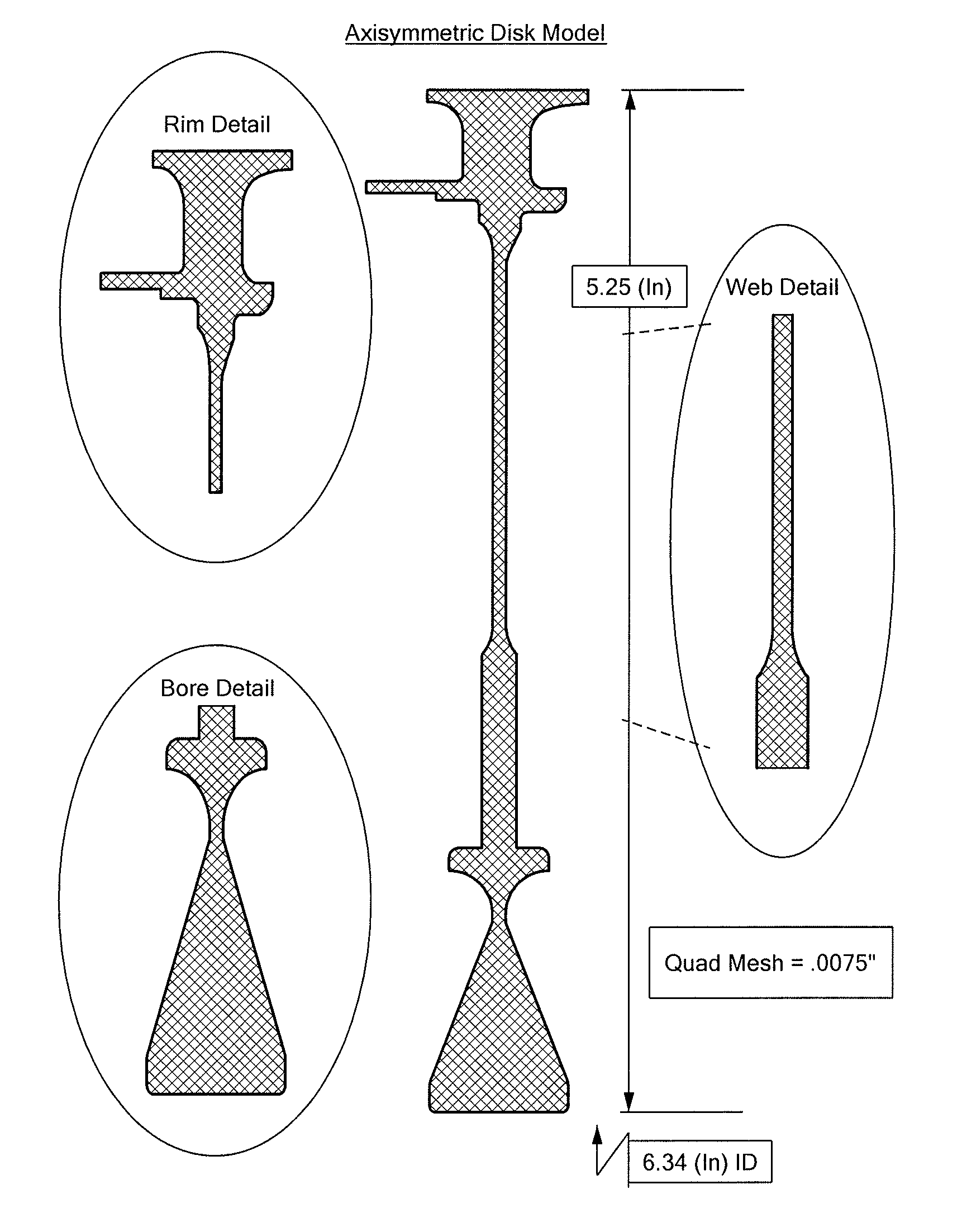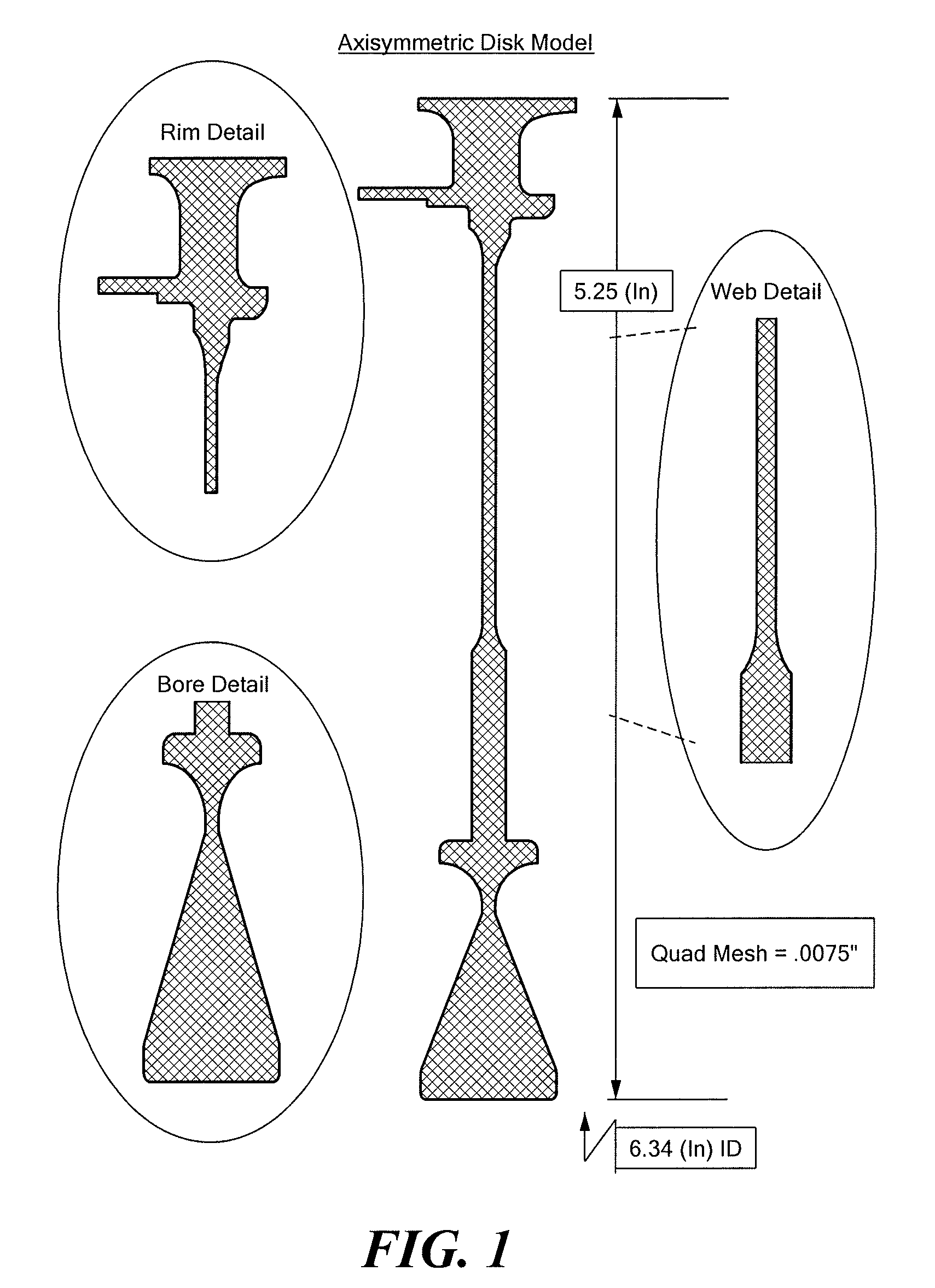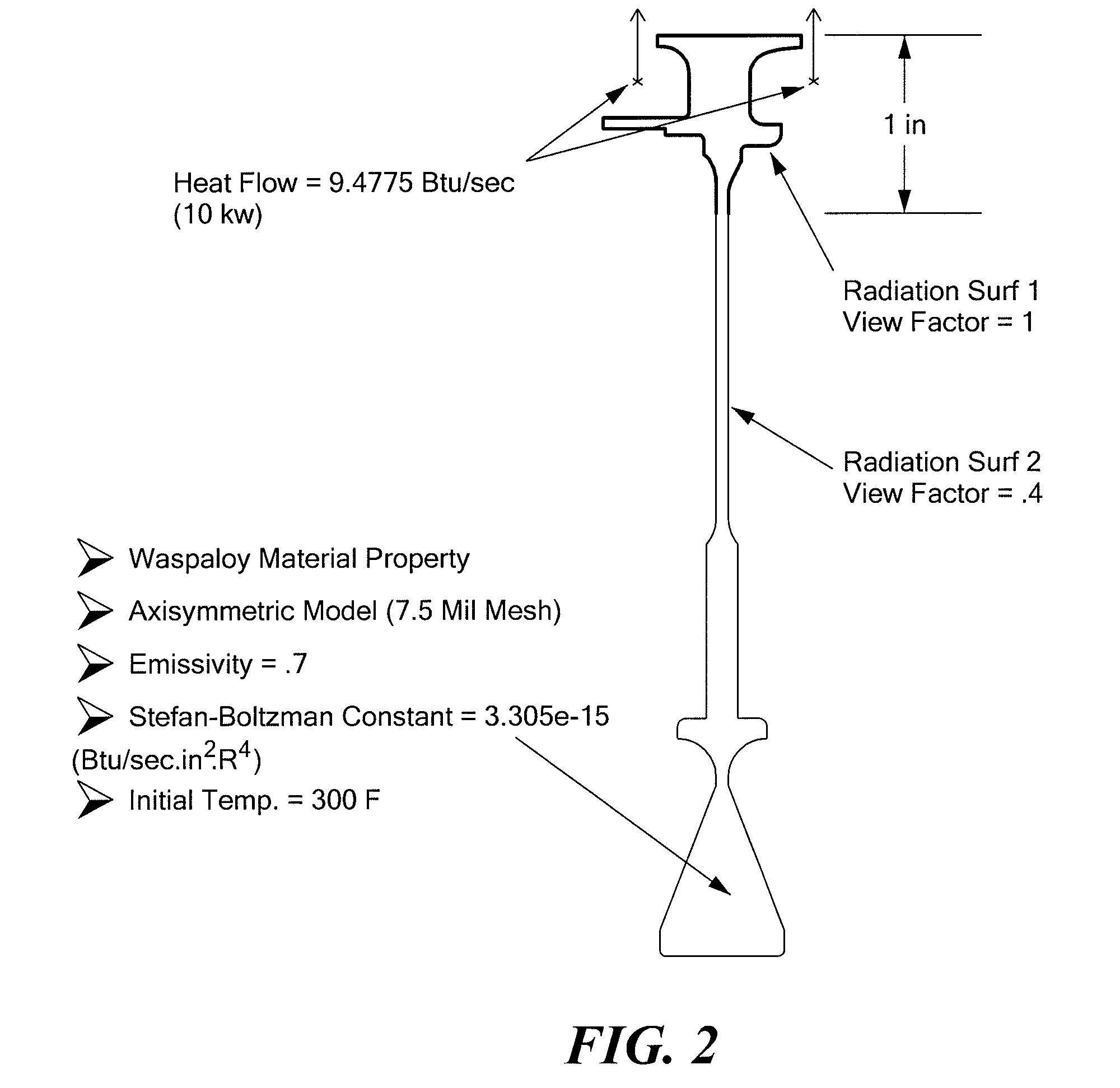Systems and methods for producing thermal mechanical fatigue on gas turbine rotors in a spin test environment
a technology of thermal mechanical fatigue and gas turbine rotor, which is applied in the direction of instruments, heat measurement, structural/machine measurement, etc., can solve the problems of inconsistent rotation component life, /inelastic strain and material behavior, and different operators may experience inconsistent rotating component life, etc., to reduce the risk of thermal radiation stray, improve heating efficiency, and reduce the effect of thermal radiation
- Summary
- Abstract
- Description
- Claims
- Application Information
AI Technical Summary
Benefits of technology
Problems solved by technology
Method used
Image
Examples
Embodiment Construction
[0046]The entire disclosure of U.S. Provisional Application No. 61 / 132,686, filed Jun. 20, 2008 is hereby incorporated herein by reference.
[0047]It is generally accepted that there is the potential for determining significant additional safe operating life in gas turbine engine components. Extending the useful service life for such engine components represents a considerable savings to the Department of Defense (DoD) and commercial aero turbine and industrial gas turbine operators. Correlation of FEA models with empirical thermal gradient testing can help reduce the risk of deviating from current conservative life estimates and potentially lead to certification of engine components at a greater number of cycles or Total Accumulated Cycles (TAC's) before they are retired. Such certification may save commercial and institutional operators, including military or other governmental operators, significant costs by increasing the time between inspections and reducing the amount of spare p...
PUM
| Property | Measurement | Unit |
|---|---|---|
| operating temperatures | aaaaa | aaaaa |
| temperatures | aaaaa | aaaaa |
| temperatures | aaaaa | aaaaa |
Abstract
Description
Claims
Application Information
 Login to View More
Login to View More - R&D
- Intellectual Property
- Life Sciences
- Materials
- Tech Scout
- Unparalleled Data Quality
- Higher Quality Content
- 60% Fewer Hallucinations
Browse by: Latest US Patents, China's latest patents, Technical Efficacy Thesaurus, Application Domain, Technology Topic, Popular Technical Reports.
© 2025 PatSnap. All rights reserved.Legal|Privacy policy|Modern Slavery Act Transparency Statement|Sitemap|About US| Contact US: help@patsnap.com



